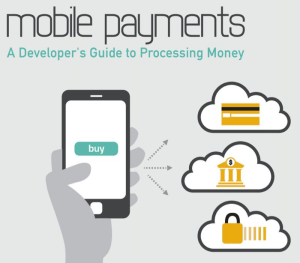This is an excerpt of a white paper I wrote for The Application Developers Alliance.
Earlier this year, Forbes.com contributor Gene Marks asked a question that gets to the heart of commercial transactions in the digital age: “With all the advances in technology, and all the things our smartphones do, why aren’t we paying for everything using a mobile app?”
 Marks posed the question in the context of his prediction that Starbucks will be the “kingmaker” in the world of mobile payments, but until there is a king, app makers and companies that wish to leverage mobile devices to sell their products and services face many choices. They have to decide how to collect money, which operating systems to use, and which payment providers have the friendliest fee structures, best support and most security.
Marks posed the question in the context of his prediction that Starbucks will be the “kingmaker” in the world of mobile payments, but until there is a king, app makers and companies that wish to leverage mobile devices to sell their products and services face many choices. They have to decide how to collect money, which operating systems to use, and which payment providers have the friendliest fee structures, best support and most security.
Xconomy Deputy Editor Gregory Huang captured the essence of the challenge. “There are so many players coming in from different angles and at different levels of the value chain,” he wrote. “Besides all the techies with apps and software platforms, you’ve got retailers, brands, banks, credit card companies, payment-processing firms, and a slew of loyalty and rewards programs, all vying for a piece of the pie.”
This guide will define the current state of the mobile payments landscape, which continues to evolve rapidly, and help players in the app industry explore their options.
The methods to mobile payment prosperity
The term mobile payments has many different meanings, from consumers using smartphones or tablets instead of their laptops to make purchases from their homes to merchants swiping credit cards on tablets or smartphones. But none of them are mainstream yet by any stretch.
The third annual Global Mobile Payments Index released in January found that such payments comprise only about 20 percent of global transactions. But that figure was up from 13 percent of transactions the previous year, a growth rate of 55 percent. The index is based on data for transactions made through Ayden, which processes payments for more than 3,500 medium, large and enterprise-sized organizations mainly operating multi-national businesses.
The realities of modern culture are certainly favorable toward even greater adoption of mobile payments. According to the Pew Internet and American Life Project, 90 percent of Americans have cell phones, 58 percent have smartphones, 42 percent own tablet computers and 32 percent own e-readers. Research by BI Intelligence tells a similar global story, noting that consumers around the world have purchased 1.3 billion smartphones in just four years — and the penetration of tablet devices into the market is double what it has been for smartphones.
Read the full paper in PDF format.